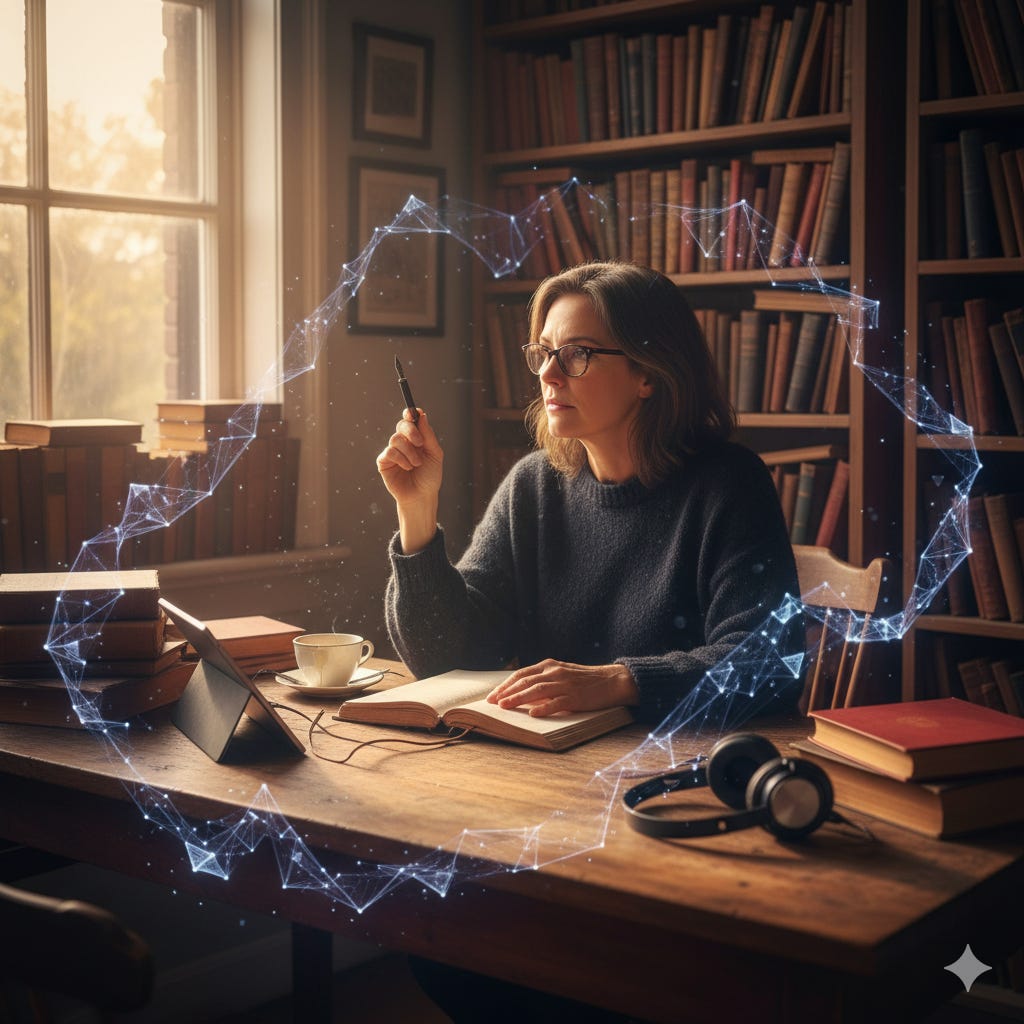What This Week’s AI Experiments Taught Me About Creativity
Technology can enhance your work, but only if the artist is guiding the tools.
AI promises ease, speed, and endless creativity. But if you’ve ever asked one of these tools to “bring your vision to life,” you know how quickly it can veer off course. The image looks right but feels wrong. The tone sounds familiar but not quite like you. What starts as a shortcut becomes another round of rework. You wanted your story, your voice, your world; somewhere in the process your fingerprints vanished.
This week I ran a few experiments prepping a sci-fi launch. I tested Grok, Sora 2, and Gemini, each one incredible in its own way. The results were fun, but mixed. For the most part, I found the images visually stunning but at the same time, emotionally empty. Grok can create galaxies but it can’t spell… even if you give it a script. Sora 2 can build incredible dreamlike scenes and create frighteningly accurate real-life characters but it doesn’t understand nuance. Gemini can build a character but doesn’t quite capture her world and certainly can’t read or spell. Each attempt reminded me that AI can mimic creativity; it cannot manufacture it. That’s all you.
These tools are powerful, but they are not the artist, you are. They can multiply your ideas, but they still need your direction. The moment you stop guiding the process, you start losing the soul of the work. The same goes for author marketing. Automation helps, but authorship, your tone, your presence, your personality, cannot be outsourced.
I don’t think authors should ignore AI. I still think it can be a valuable, time-saving tool. Many authors I know use it to reclaim time for the creative work only they can do. AI helps simplify the background tasks that used to eat up hours in my own coaching and done-for-you client work. We use AI to begin podcast research, organize files, research social media trends, and locate potential marketing partners. It can even help visualize a scene, mock up an image for a post, or summarize data from a campaign so authors see what’s working faster.
But it isn’t perfect. It doesn’t hold all the answers. In fact, many of the answers are old or inaccurate. Results always require verification. But it still saves time. And that’s my most valuable resource.
So yes, use AI. Let it speed up the small stuff and lighten your load. But when it comes to your creative work, your words, your stories, your message, stay hands on. Keep your standards and protect your voice. Review everything like a first draft, not a finished product. Tools will keep getting better, but they will never replace the way you see, think, and create. That’s your edge. That’s your signature.
Remember, hammers don’t build houses; carpenters build houses.
Where could AI save you time this week without replacing your voice?
Lynn brings her more than 30-years experience in small business marketing, publishing, and multiple best-selling author campaigns to her Substack newsletter. She helps authors build and grow their platforms to reach their unique marketing goals through private coaching, non-fiction consulting, and done-for-you marketing programs. And all this, through her computer, in her little lake house in rural Pennsylvania which she shares with her husband, son, and two fluffy companions, Kaiju and Bella.




I love ChatGpt5. The AI is my personal assistant. I used another AI to translate my novel, "Einstein's Compass a YA Time Traveler Adventure" from English into German. I use Chat to help me with translating my English marketing into German for the German reading market. ChatGPT5 is my wise partner in my writing and marketing.